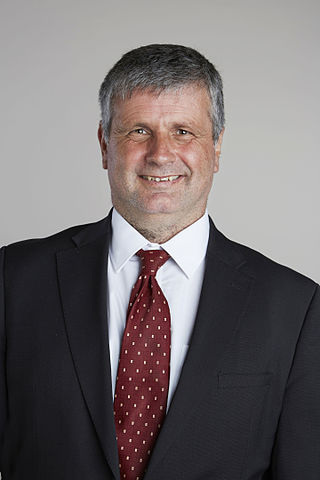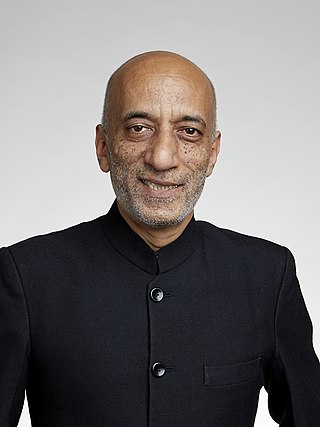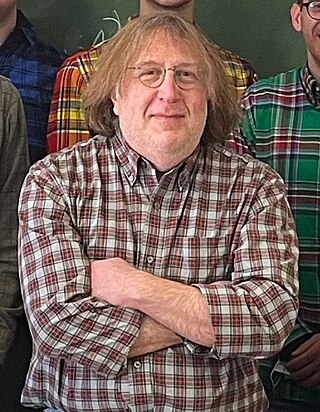Related Research Articles

Condensed matter physics is the field of physics that deals with the macroscopic and microscopic physical properties of matter, especially the solid and liquid phases that arise from electromagnetic forces between atoms and electrons. More generally, the subject deals with condensed phases of matter: systems of many constituents with strong interactions among them. More exotic condensed phases include the superconducting phase exhibited by certain materials at extremely low cryogenic temperatures, the ferromagnetic and antiferromagnetic phases of spins on crystal lattices of atoms, the Bose–Einstein condensates found in ultracold atomic systems, and liquid crystals. Condensed matter physicists seek to understand the behavior of these phases by experiments to measure various material properties, and by applying the physical laws of quantum mechanics, electromagnetism, statistical mechanics, and other physics theories to develop mathematical models and predict the properties of extremely large groups of atoms.

Brian David Josephson is a British theoretical physicist and professor emeritus of physics at the University of Cambridge. Best known for his pioneering work on superconductivity and quantum tunnelling, he was awarded the Nobel Prize in Physics in 1973 for his prediction of the Josephson effect, made in 1962 when he was a 22-year-old PhD student at Cambridge University. Josephson is the first Welshman to have won a Nobel Prize in Physics. He shared the prize with physicists Leo Esaki and Ivar Giaever, who jointly received half the award for their own work on quantum tunnelling.
The λ (lambda) universality class is a group in condensed matter physics. It regroups several systems possessing strong analogies, namely, superfluids, superconductors and smectics. All these systems are expected to belong to the same universality class for the thermodynamic critical properties of the phase transition. While these systems are quite different at the first glance, they all are described by similar formalisms and their typical phase diagrams are identical.
Tom C. Lubensky is an American physicist. He is currently the Christopher H. Browne Distinguished Professor at the University of Pennsylvania, where he was Mary Amanda Wood professor of physics (1998–2009) and chair of the Department of Physics and Astronomy.
The distortion free energy density is a quantity that describes the increase in the free energy density of a liquid crystal caused by distortions from its uniformly aligned configuration. It also commonly goes by the name Frank free energy density named after Frederick Charles Frank.
The Nevill Mott Medal and Prize is an award presented in selected years by the Institute of Physics in the United Kingdom, for distinguished research in condensed matter or materials physics. It was first established in 1997 thanks to a donation from Sir Nevill Mott's family. Sir Nevill Mott was one of the outstanding British condensed matter theorists and won a Nobel Prize in Physics in 1977. He died in 1996. The award consists of a silver medal and a prize of £1000.

David R. Nelson is an American physicist, and Arthur K. Solomon Professor of Biophysics, at Harvard University.
Steven M. Girvin is an American physicist who is the Eugene Higgins Professor of Physics at Yale University and who served as deputy provost for research at Yale from 2007 to 2017. Girvin is noted for his theoretical work on quantum many body systems such as the fractional quantum Hall effect, and as co-developer of circuit QED, the application of the ideas of quantum optics to superconducting microwave circuits. Circuit QED is now the leading architecture for construction of quantum computers based on superconducting qubits.

Piers Coleman is a British-born theoretical physicist, working in the field of theoretical condensed matter physics. Coleman is professor of physics at Rutgers University in New Jersey and at Royal Holloway, University of London.

Bernd T. Matthias was a German-born American physicist credited with discoveries of hundreds of elements and alloys with superconducting properties. He was said to have discovered more elements and compounds with superconducting properties than any other scientist.
David J. Pine is an American physicist who has made contributions in the field of soft matter physics, including studies on colloids, polymers, surfactant systems, and granular materials. He is professor of physics in the NYU College of Arts and Science and chair of the Department of Chemical and Biomolecular Engineering at the NYU Tandon School of Engineering.
George Ogurek Zimmerman, was a Polish-born American scientist, researcher, inventor, professor of physics and physics department chair at Boston University. Zimmerman achieved his PhD in solid state physics in 1963 at Yale University and came to Boston University in the fall of 1963.
Ashvin Vishwanath is an Indian-American theoretical physicist known for important contributions to condensed matter physics. He is a professor of physics at Harvard University.

Andrew Peter Mackenzie is a director of Physics of Quantum Materials at the Max Planck Institute for Chemical Physics of Solids in Dresden, Germany and Professor of Condensed Matter Physics at the University of St Andrews, Scotland. He became a co-editor of the Annual Review of Condensed Matter Physics as of 2020.

Sriram Rajagopal Ramaswamy is an Indian physicist. He is a professor at the Indian Institute of Science, Bangalore, and previously the director of the Tata Institute of Fundamental Research (TIFR) Centre for Interdisciplinary Sciences in Hyderabad.
Matthew P. A. Fisher is an American theoretical physicist and professor of physics at the University of California, Santa Barbara, and is known for several major contributions to condensed matter physics. He completed his bachelor's degree in engineering physics from Cornell University in 1981 and earned a Ph.D. in theoretical physics from the University of Illinois at Urbana-Champaign in 1986 with Anthony Leggett as his advisor, with part of his work done under the supervision of Eduardo Fradkin. He went on to become first a visiting scientist and then a research staff member at IBM T. J. Watson Research Center (1986–1993). He joined the Kavli Institute for Theoretical Physics and the physics department of the University of California in 1993. In 2007 he joined Microsoft's Station Q as a research physicist, on leave from the UCSB physics department. During the academic year 2009–2010 he was on the faculty at Caltech, returning to the physics department at UCSB in summer 2010.
Eduardo Hector Fradkin is an Argentinian theoretical physicist known for working in various areas of condensed matter physics, primarily using quantum field theoretical approaches. He is a Donald Biggar Willett Professor of Physics at the University of Illinois at Urbana–Champaign, where he is the director of the Institute for Condensed Matter Theory, and is the author of the books Quantum Field Theory: An Integrated Approach and Field Theories of Condensed Matter Physics.
Mohit Randeria is a US-based Indian condensed matter physicist and a professor of physics at Ohio State University. Known for his research on condensed matter theory and superconductivity, Randeria is an elected fellow of the American Physics Society. The Council of Scientific and Industrial Research, the apex agency of the Government of India for scientific research, awarded him the Shanti Swarup Bhatnagar Prize for Science and Technology, one of the highest Indian science awards, for his contributions to physical sciences in 2002. He was awarded the 2002 ICTP Prize of the International Center for Theoretical Physics, Trieste and the 2022 John Bardeen Prize.

Randall David Kamien is a theoretical condensed matter physicist specializing in the physics of liquid crystals and is the Vicki and William Abrams Professor in the Natural Sciences at the University of Pennsylvania.
Dov I. Levine is an American-Israeli physicist, known for his research on quasicrystals, soft condensed matter physics, and statistical mechanics out of equilibrium.
References
- 1 2 "Prize Recipient". www.aps.org. Retrieved 2017-10-24.
- ↑ Chaikin, P. M.; Lubensky, T. C. (28 September 2000). Principles of Condensed Matter Physics. Cambridge University Press. ISBN 0521794501.
- ↑ Karakashian, A. S. (2001). "A Review of "Principles of Condensed Matter Physics" by PM Chaikin and TC Lubensky, Cambridge University Press, Cambridge, UK, 2000, ISBN 0 521 79450 1(paperback)". Molecular Crystals and Liquid Crystals Science and Technology. Section A. Molecular Crystals and Liquid Crystals. 369 (1): 275. doi:10.1080/10587250108030023. S2CID 96677269.
- ↑ Kelleher, Colm; Guerra, Rodrigo; Hollingsworth, Andrew; Chaikin, Paul (13 September 2017). Adult Coloring Book Phases of Matter: Scientific Illustrations Expertly Composed to Help Reduce Stress, Sharpen Your Concentration, and Nourish Your Creativity. Green Frog. ISBN 978-0998281759.
- ↑ "2009 World Technology Awards website". Archived from the original on 2011-05-24. Retrieved 2009-08-12.